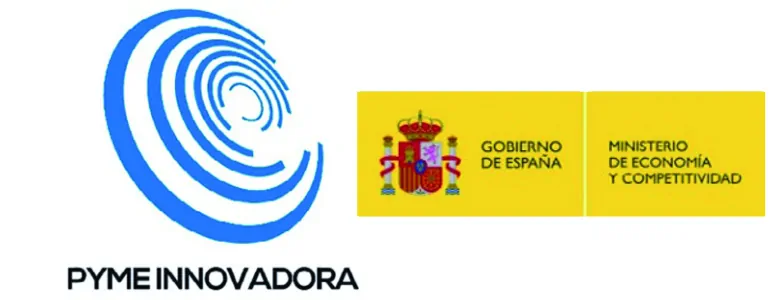
HORIZON EUROPE

 Europeo
Europeo
Expected Outcome:Projects should contribute to all of the following expected outcomes:
The European Collaborative Cloud for Cultural Heritage (ECCCH) is widely used by European cultural heritage professionals and researchers[1] for the study of cultural heritage objects[2], supporting research, innovation and didactic purposes.The ECCCH is widely used by European cultural heritage professionals and researchers to support conservation and restoration works, both for planning, implementation and documentation.European cultural heritage professionals and researchers are provided with clear information as well as targeted training modules on the innovative tools and methods developed. Scope:This topic aims at developing and implementing a set of innovative tools and methods on the European Collaborative Cloud for Cultural Heritage (ECCCH) based on the digital twins of cultural heritage objects stored in the ECCCH, for the study, conservation and restoration of cultural heritage objects. Concrete applications of these tools and methods should be provided for at least the following uses:
Supporting the study of cultural heritage objectsSupporting conservation an...
ver más
Expected Outcome:Projects should contribute to all of the following expected outcomes:
The European Collaborative Cloud for Cultural Heritage (ECCCH) is widely used by European cultural heritage professionals and researchers[1] for the study of cultural heritage objects[2], supporting research, innovation and didactic purposes.The ECCCH is widely used by European cultural heritage professionals and researchers to support conservation and restoration works, both for planning, implementation and documentation.European cultural heritage professionals and researchers are provided with clear information as well as targeted training modules on the innovative tools and methods developed. Scope:This topic aims at developing and implementing a set of innovative tools and methods on the European Collaborative Cloud for Cultural Heritage (ECCCH) based on the digital twins of cultural heritage objects stored in the ECCCH, for the study, conservation and restoration of cultural heritage objects. Concrete applications of these tools and methods should be provided for at least the following uses:
Supporting the study of cultural heritage objectsSupporting conservation and restoration works Supporting the study of cultural heritage objects
For this use, projects funded under this topic should develop tools and methods which build on the digital twins of cultural heritage objects stored in the ECCCH to allow cultural heritage professionals and researchers to structure, encode, store and analyse all knowledge needed for the study of a cultural heritage object such as artworks, prints, drawings, etc. Such combined use of multiple types of digital visual and other data available on the ECCCH could revolutionise current methodologies in research, documentation and didactics related to the study of cultural heritage objects. The tools would enable visualisation and measurement, support analysis and documentation of the reasoning process (e.g. via annotations or metadata), and build on highly accurate digital representations of the object (2D, 3D, 4D) stored in the ECCCH. The tools should allow to access, interlink, enhance, enrich and archive all necessary knowledge. Search-by-similarity queries should be possible over the ECCCH, based on innovative AI solutions.
The focus is not only on documenting and archiving multiple heterogeneous documents, but also on identifying, storing and visualising connections among those assets. The digital twin of the cultural heritage object should be a spatial index for structuring and presenting all this knowledge. A cooperative approach should be enabled, with full control of who can access what.
Supporting conservation and restoration works
In the cultural heritage field, many different types of data are typically used to describe and monitor the condition of objects for conservation and restoration purposes, such as survey data, scientific imaging, reports, maps of degradation, photographic collections, historical archives, material sample analyses, etc. Many different professional disciplines are involved in data collection, processing and analysis (e.g. art history, architecture, conservation, materials science and engineering). Data collection, processing and analysis is an extremely complex task, performed both before and during restoration/conservation works.
For this use, projects funded under this topic should develop tools and methods to collect, manage and use data - with associated knowledge - for conservation and restoration purposes. These tools should build on the digital twins of cultural heritage objects stored in the ECCCH and enable users to structure, encode, store, and analyse all resources needed for conservation assessment, restoration planning, and for documentation of restoration results, within a well-defined and dynamic collaborative framework.
To cater to the needs of the wide range of professionals involved, the tools should address at least:
Capture and management of information about material objects (including static and dynamic sensor networks), ensuring continuously updated digital twins in the ECCCH.Characterisation of the physical state of artefacts through analysis of material samples, scientific imaging, simulation of behaviours, etc.Efficient digital tools to assist users in analysis, diagnosis, and decision making.Evaluation and validation of documentation (including examination of diagnostic studies), to establish reproducible protocols for other (future) conservation and restoration efforts.Monitoring and archiving the conservation/restoration process over time with a long-term perspective, to prevent unnecessary degradation and plan for future restoration activities. AI based methods have the potential to play a key role in developing improved methods for solving research questions or gaining insights about data, such as categorisation, segmentation, recognition, analysis, and understanding. The goal should be to semi-automate work-intensive activities that are common in conservation and restoration.
With a view to use resources efficiently and go beyond the state of the art, projects funded under this topic should, where appropriate, build on previous existing research, methods and solutions. Proposals should therefore ensure that existing tools and methods and their potential (re-)use are properly examined.
Ease of use for the target users is of paramount importance. Therefore, tools and methods should be developed in close collaboration with actively involved representative target users. Furthermore, tools and methods should be thoroughly tested and verified with a significant number of users before the end of the project. Financial support to third parties may be used to facilitate the engagement with users. The financial support to third parties can only be provided in the form of grants.
In order to facilitate the access for less well-equipped users, the developed software tools should to the extent possible be accessible online without requiring installation nor special or particularly powerful equipment. Also, the developed software tools should to the extent appropriate be designed to allow use and avoid loss of work in situations with unstable or limited connectivity.
Projects funded under this topic should demonstrate the potential of the developed tools and methods through representative case studies, conducted in collaboration with relevant users. These case studies should cover a significant share of the range of cultural heritage objects, materials and issues that the tools and methods intend to address. The results of these case studies should produce information that can serve as models for promoting the re-use of the tools and methods in other contexts and by other users within, and where appropriate beyond, the ECCCH.
Proposals should, furthermore, foresee appropriate resources to provide clear information and elaborate targeted training modules for users of the developed tools and methods.
The tools to be developed should be implemented using the low-level libraries established by the project funded under topic HORIZON-CL2-2023-HERITAGE-ECCCH-01-01. The tools developed should be compliant with the design of the ECCCH, and should be integrated with the ECCCH before the end of the project, together with proper documentation. All software and other related deliverables should be compliant with the data model and the software development guidelines elaborated by the project funded under topic HORIZON-CL2-2023-HERITAGE-ECCCH-01-01. If appropriate these tools should be developed with a view to a wider deployment, including in the Common European Data Space for Cultural Heritage, as well as, when appropriate, for reuse via the European Open Science Cloud. Furthermore, content produced by these tools for the ECCCH should be interoperable for sharing, when appropriate, via the Common European Data Space for Cultural Heritage and/or the European Open Science Cloud.
Proposals should furthermore make provisions to actively participate in the common activities of the ECCCH initiative. In particular, projects funded under this topic should coordinate technical work with projects funded under other call topics of the ECCCH initiative, and contribute to the activities and objectives of the project funded under the topic HORIZON-CL2-2023-HERITAGE-ECCCH-01-01. Proposals should include a budget for the attendance to regular joint coordination meetings, and may consider covering the costs of any other joint activities without the prerequisite to detail concrete joint activities at this stage.
Projects funded under this topic should moreover set up their project websites under the common ECCCH website, managed by the project funded under topic HORIZON-CL2-2023-HERITAGE-ECCCH-01-01.
Furthermore, the Commission expects projects funded under this topic to establish regular coordination mechanisms in order to ensure synchronised planning as well as synergy and/or complementarity of deliverables and outcomes.
The Commission recommends considering reporting periods of 12 months when elaborating proposals.
Please also refer to the Destination introduction text to consider some key characteristics of the vision for the ECCCH.
[1] ‘Cultural heritage professionals and researchers’ should in the context of the ECCCH be interpreted as including all different professions and disciplines involved in the cultural heritage field, such as curators, conservators, researchers, art managers, educators, etc., that may develop their activities for instance at cultural heritage institutions, research organisations, higher education establishments or in the cultural and creative industries.
[2] ‘Cultural heritage objects’ should in the context of the ECCCH be interpreted as including any form of cultural heritage that can be represented in a digital format: tangible, intangible, born digital; movable objects, buildings, documents, inscriptions, etc.
ver menos
Características del consorcio
 :
La ayuda es de ámbito europeo, puede aplicar a esta linea cualquier empresa que forme parte de la Comunidad Europea.
:
La ayuda es de ámbito europeo, puede aplicar a esta linea cualquier empresa que forme parte de la Comunidad Europea.
Características del Proyecto
Gastos relacionados con el personal que trabaja directamente en el proyecto basado en las horas efectivas dedicadas, basado en el coste empresa y ratios fijos para determinados empleados como los dueños de la compañía.
Pagos a terceros externos para realizar tareas específicas que no pueden ser realizadas por los beneficiarios del proyecto.
Incluyen la adquisición de equipos, amortizaciones, material, licencias u otros bienes y servicios necesarios para la ejecución del proyecto
Gastos diversos como costes financieros, certificados de auditoría o participación en eventos no cubiertos por otras categorías
Gastos generales no asignables directamente al proyecto (como electricidad, alquiler u oficina), calculados como un 25% fijo sobre los costes directos elegibles (excepto subcontratación).
Características de la financiación
Para el presupuesto subvencionable la intensidad de la ayuda en formato fondo perdido podrá alcanzar desde un 70% hasta un 100%.
Información adicional de la convocatoria

Otras ventajas
Ayudas Similares

| Próximamente

| Próximamente

| Próximamente

